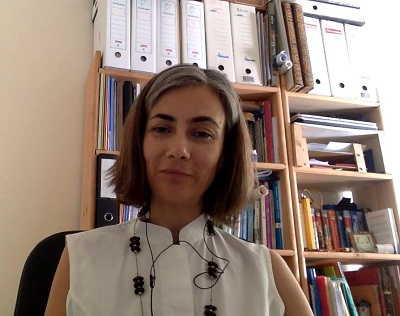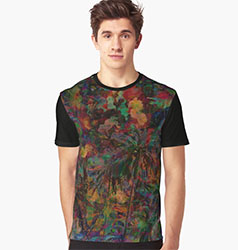Tetrahydrocannabinol (THC) is a phytocannabinoid that activates the CB1 and CB2 receptors in the body. The CB1 receptors are generally located in the nervous system and they are responsible for the psychoactive effect that THC can cause. The CB2 receptors are more generally located in the immune and gastrointestinal systems. When you smoke or ingest cannabis, THC travels into the bloodstream where it binds to cannabinoid receptors. These receptors affect memory, concentration, pleasure, coordination, sensory and time perception, appetite and many more important functions.
Smoking or ingesting too much cannabis in a short period of time can intensify and alter these effects. The effects are stronger and take longer to react with edibles than smoked cannabis. This phenomenon, often referred to as “greening out,” can be a very unpleasant and even a scary experience. The good news is, as reported in The British Journal of Psychiatry, cannabis is safe in overdose. In other words, it is physically impossible to overdose on cannabis. Having said that, this guide will be helpful to medical marijuana patients who find themselves smoking or ingesting too much of their favorite plant.
What are the signs and symptoms of a cannabis overdose?
- Severe paranoia, fear and anxiety
- Lack of energy and enthusiasm
- Heavy limbs / lack of mobility
- Extreme dry mouth
- Burning eyes
- Shortness of breath
- Increased heart rate
- Shaking / trembling
- Chills / sweats
- Disorientation / lack of focus
- Upset stomach
How long will my cannabis “high” last?
The experience of being overly medicated can pass very quickly (30mins – 1 hr) or it can last for several hours (6+ hours) – some have reported episodes of up to 10 hours, although this is extremely rare. Symptoms will eventually go away on their own without any medical treatment. Obviously, you should still seek medical care if there are noticeable complications, especially if cannabis has been mixed with pharmaceuticals or alcohol.
How do I mitigate the effects of consuming too much cannabis?
1. Calm down and relax. Approach the situation in an accepting and calming way. Your initial reaction is usually panic. Freaking out will make the situation worse. Panic can temporarily rob you of your ability to think and concentrate. Employ meditation techniques to calm your mind. My favorite is the mantra meditation technique. During mantra meditation you mentally or softly keep repeating a word or phrase, such as “fear isn’t real, fear isn’t real, fear isn’t real,” until you have replaced all your busy thoughts. Remember you are in discomfort not danger. Fear comes from thinking about what may happen, not what is actually happening.
2. Find your happy place. Bright lights, loud music, crowds and noise are stimulating, so they can make everything more frightening. Some people get anxious when in a crowded or public place because they are concerned that others will observe their highness. Getting to a place where you feel safe is the key. A quiet, dark room or watching TV alone works for some; while others prefer to distract themselves with the people and objects around them by playing a videogame or blaring their favorite tunes.
3. Take deep breaths. Just breathe. Do some diaphragmatic breathing – belly breathing. Many people think they know how to do deep breathing, but if you aren’t doing it correctly, you are not going to get good results.
4. Stay hydrated. You are at a higher risk of dehydration and may need to increase your water intake. If the thought of water doesn’t sit well, try adding some fresh lemon or lime. Other foods and drinks that can help you stay hydrated include fruit and vegetable juices, milk and herbal teas. High water content fruits include watermelon, strawberries, cantaloupe, pineapples, oranges and raspberries.
5. Boost your blood sugar. Cannabis has been associated with lower blood sugar, which is great for reducing the tendency toward both obesity and type 2 diabetes; but if you are prone to swings in blood sugar, many of the symptoms you are experiencing may be related thereto. If you suspect your blood sugar is low, try adding a tablespoon of honey to a glass of water. Hope Warshaw, RD, a certified diabetes educator and author of Diabetes Meal Planning Made Easy, does not recommend chocolate. She explains that the fat in chocolate slows down how fast the sugar and carbohydrates can get into your bloodstream, making chocolate an inferior choice to fruits containing natural sugars.
6. Reach for CBD. A lot of the feelings of paranoia and anxiety stem from too much THC and not enough other cannabinoids to balance out THC’s psychoactive effect. According to the study, Hypnotic and antiepileptic effects of cannabidiol, CBD was shown to possess sedative properties. Try a CBD tincture or transdermal patch to counteract the unwanted psychoactive effects of THC.
7. The black pepper myth. The black pepper suggestion went viral when Neil Young told Howard Stern during an interview in 2014, “Try black pepper balls if you get paranoid. Just chew two or three pieces. I just found this out myself. Try it.” A study conducted on mice suggests that beta-caryophyllene (present in the essential oils of various plants, including black pepper) may be useful in treating anxiety and depression. Black pepper is also known to increase drowsiness. However, it can also lower blood sugar levels. Caution is advised in patients with diabetes or hypoglycemia, and in those taking drugs, herbs or supplements that affect blood sugar.
8. Get some sleep. Sometimes a good nap may be all that is needed. Curl up in your blankets with a soft pillow and think happy thoughts. Sleeping is the most effective way to remedy smoking too much cannabis. However, because infused edibles take much longer to digest, you may wake up feeling dazed and confused. Not to worry, these feelings should fade away as your day progresses. Some patients have reported feeling slight depression for 1-2 days following a large cannabis intake, although this has not been proven by any clinical studies.
The best way to avoid a bad experience is to make sure you’re informed about proper dosages and to always approach cannabis, especially edibles, with caution. You need to find the proper amount that works for you. Cautious experimentation is the only way to find that out. That’s why lab testing cannabis is so important; without the vital lab data, patients are left to fend for themselves. Compile that with a general lack of patient education systems and it’s no wonder why so many people have had at least one bad experience when consuming too much cannabis in one sitting.
*Medical Disclaimer* – The information provided herein is provided for information purposes only. As such it cannot substitute for the advice of a medical professional.
Read more http://www.medicaljane.com/2015/11/05/can-you-overdose-on-marijuana-survival-tips-for-greening-out/
Latest
Coronavirus Strikes Massachusetts Cannabis Company Employees
Reassessing the Essential: Cannabis in the Time of a Pandemic
5 Reasons To Try Aspen Valley CBG Flower (30% Off)
High Times Cannabis Cups Go Virtual In Wake Of Coronavirus Pandemic
Drug Enforcement Administration Proposes Plan To Expand Cannabis Research
Ghana Legalizes Cannabis For Medicinal And Industrial Uses
The cheapest legal weed in Canada: Discover these cannabis ‘value brands’
Cannabis and coronavirus: Here’s what you need to know
cannabis designs
The Best Of
WHO Rules CBD Should Not Be a Scheduled Drug

Dr Cristina Sanchez PhD video interview on medical marijuana and cancer

Biochemist Dennis Hill interview; Cannabis oil as a cure for cancer.

The unofficial World Record holder for cannabis smoking part 1





